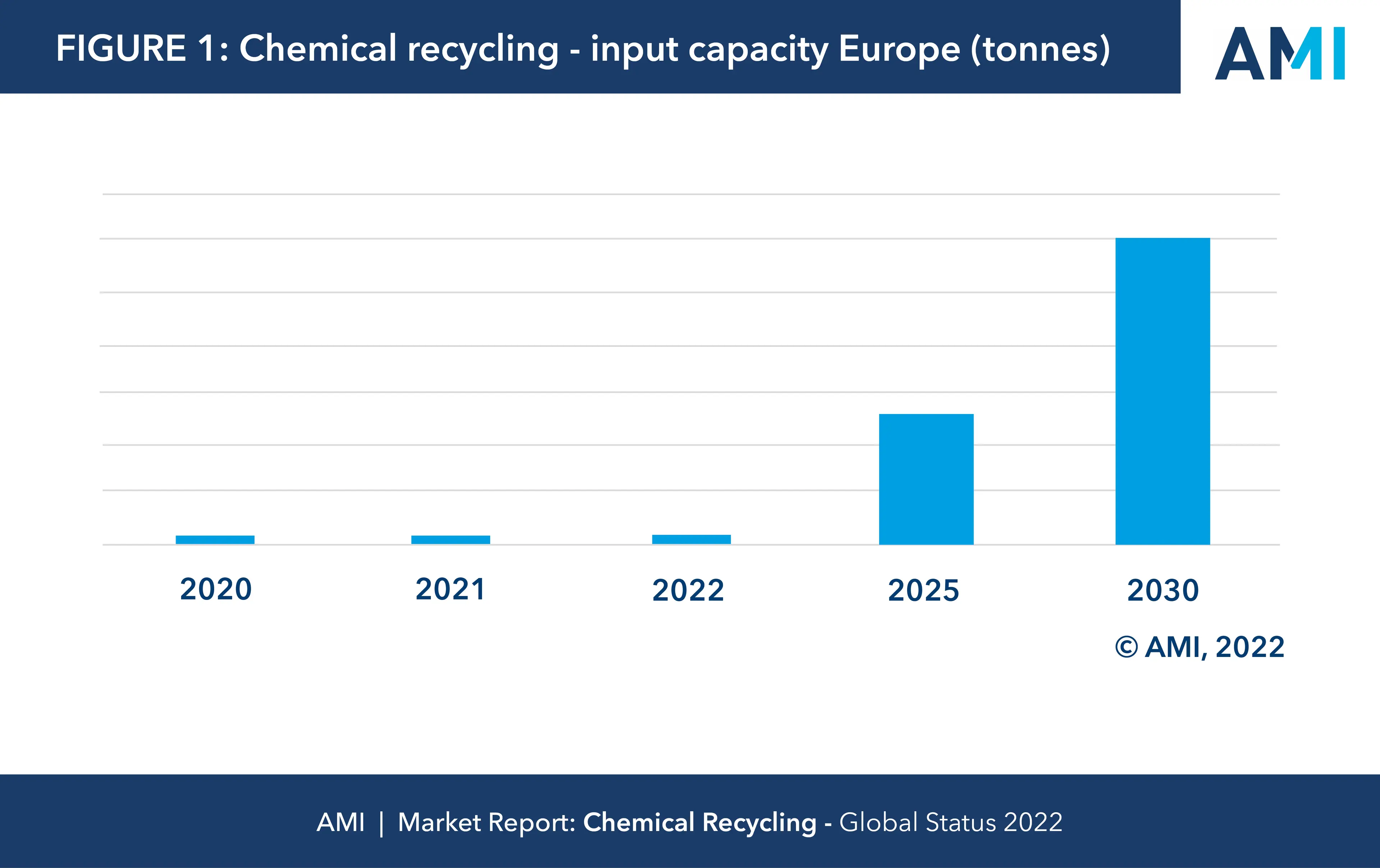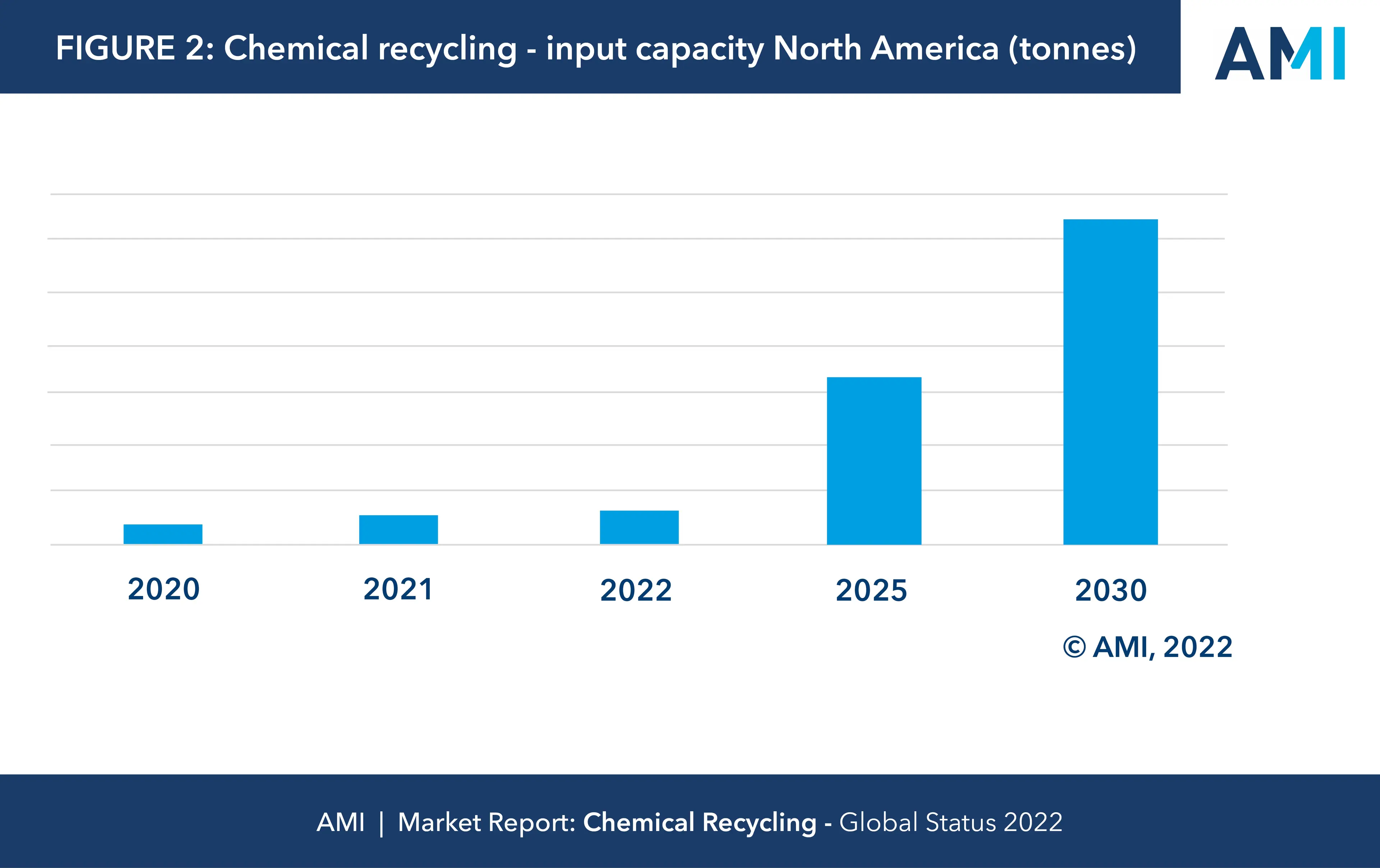Great expectations - the global chemical recycling industry
9 January 2023
AMI, Bristol, January 2023 – AMI’s second authoritative report on the global chemical recycling industry identifies a global chemical recycling input capacity of close to 1.2 million tonnes in 2022, excluding facilities processing post-use plastics into fuels.
Having identified 2023 as a pivotal year for industry development, expectations are high for additional capacity coming onstream. Just looking at the last quarter of 2022 and the year 2023 a total of 22 companies globally announced plans to start commercial demonstration facilities and fully commercial chemical recycling facilities during this period, with a focus on Europe, followed by North America.
In response to the continuing fast speed of industry developments AMI, from the end of Q1 onwards, will launch a subscription offer for the report, featuring quarterly updates of global developments in both quantitative and qualitative terms.
However, Article 47 paragraph 9 of the draft Regulation (Rules on the calculation of the attainment of recycling targets) provides a potential indication of chemically recycled plastics to be counted towards the achievement of recycling targets, if operations do not convert waste to fuel or for incineration, backfilling, and landfilling, which is a promising development for the industry.
In Europe, legislation continues to be a key driver of recycling industry developments overall. The publication of the EU’s proposal for a revised Packaging and Packaging Waste Regulation in November 2022 re-emphasised the urgent need to increase the supply of recycled material, as one core element of the new Regulation are recycled content targets for 2030 and 2040 respectively.
These apply to PET contact-sensitive packaging (30% and 50%), other contact-sensitive packaging (10% and 50%), single use plastic beverage bottles (30% and 65%), and other types of packaging (35% and 65%).
Targets will have to be met for each unit of plastic packaging, with recycled content from post-consumer plastic waste. While to be welcomed for its push to create much needed market demand for recycled materials, success will depend on the availability of sufficient volumes of recyclates to incorporate into these packaging types.
Especially where food contact materials are concerned this is far from certain given the EU’s strict food contact rules incorporated in EU Regulation 282/2008. Despite continued announcements and investments chemical recycling is unlikely to be able to close the gap between demand and availability in the short and possibly medium term.
However, Article 47 paragraph 9 of the draft Regulation (Rules on the calculation of the attainment of recycling targets) provides a potential indication of chemically recycled plastics to be counted towards the achievement of recycling targets, if operations do not convert waste to fuel or for incineration, backfilling, and landfilling, which is a promising development for the industry.

In the US, input capacity for chemical recycling facilities is forecast to significantly increase over the coming years. However, the EPA’s decision on how to regulate chemical recycling technologies is still outstanding. The Agency has opened a formal rulemaking process in 2021 to determine how to regulate pyrolysis and gasification facilities which are currently classified as ‘municipal waste combustion units’, and thus waste management operations, under the Clean Air Act, section 129.
Concerns have been raised by environmentalists over the technologies’ impact on climate/CO2 emissions and the release of hazardous chemicals, as well as environmental justice, with the latter being a major priority for the EPA as well as the Biden administration. To date 21 individual US states have passed legislation reclassifying chemical recycling as a manufacturing process rather than a waste management operation.
As such, chemical recycling plants are viewed as recycling facilities for the purpose of environmental legislation, funding, and taxation. Also, chemically recycled material can over coming years potentially be counted in the reaching of recycled content mandates and be marketed as recycled material.

AMI’s report provides a comprehensive global directory of 181 chemical recyclers and their 449 sites, including headquarters and site-level information on
- existing and planned capacities to 2030,
- technologies used,
- types of post-use plastics processed,
- feedstock sources and sourcing models,
- operational details, and
- outputs of the chemical recycling process.
In a unique approach to the industry, chemical recyclers are placed within a value chain context, with the interactive report format mapping industry relationships across the value chain. This allows users to gain a clear understanding of the developing complex partnerships and interactions within the industry and across the wider petrochemical and plastics processing landscape.
The launch of the subscription offer from the end of Q1 2023 ensures that buyers are kept up-to-date with industry developments in both quantitative and qualitative terms. For further information please get in touch with Silke Einschuetz, Senior Consultant Recycling & Sustainability, AMI, E/silke.einschuetz@amiplastics.com